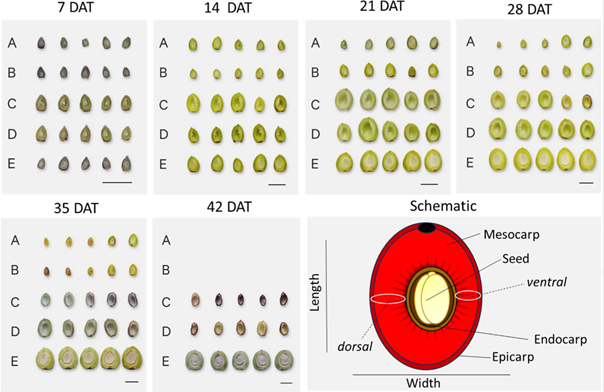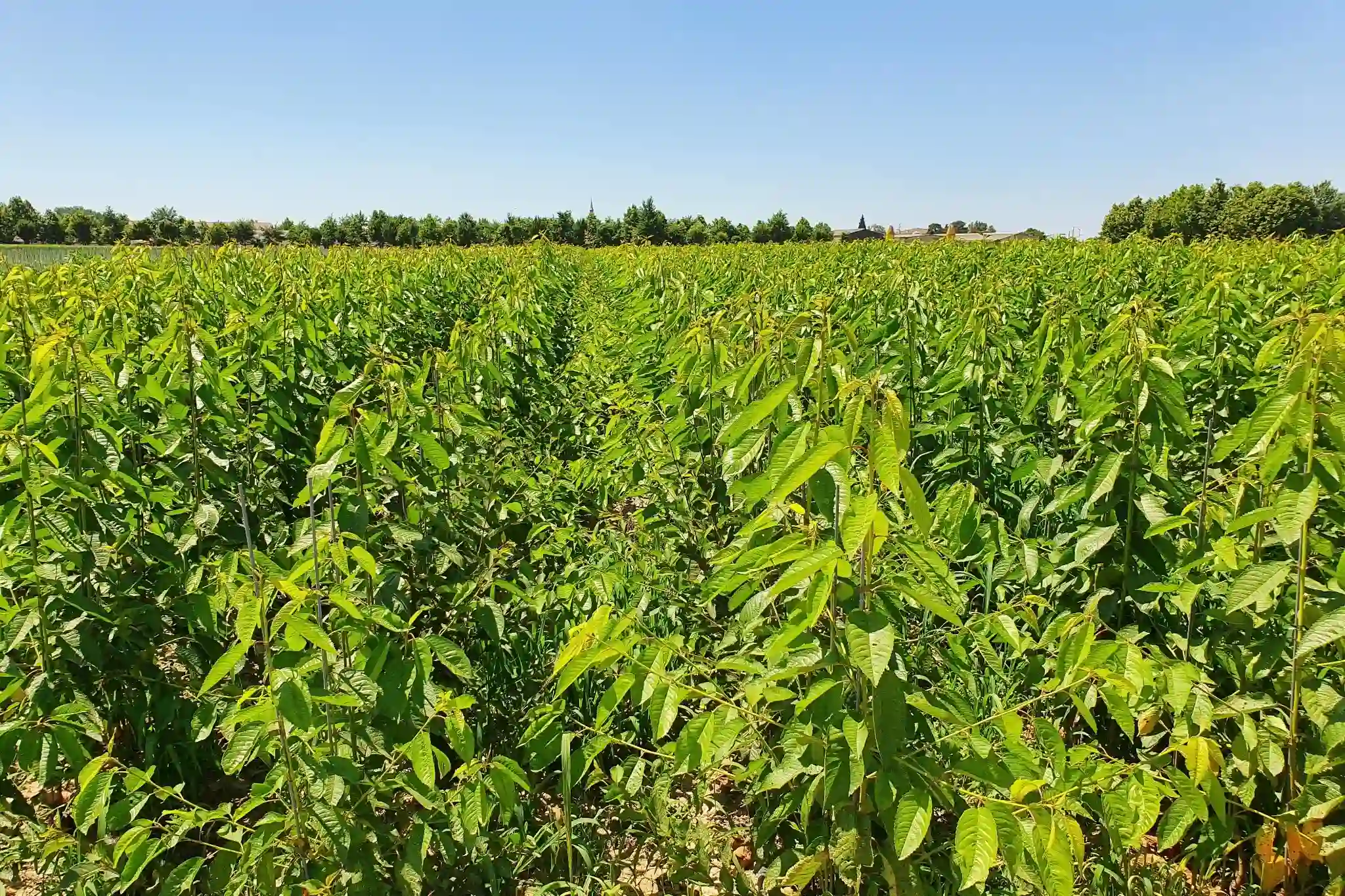A recent English study tested the application of gibberellic acid (GA3) on sweet cherry trees for fruit development. GA3 is known for its ability to induce parthenocarpy, the formation of seedless fruits, in various plant species. However, the effectiveness of this treatment varies depending on the species.
In the case of sweet cherries, the application of GA3 activated the fruit development process, but growth stopped after 28 days, suggesting that additional signals, besides gibberellins, are needed to complete the development and reach full maturation.
Gibberellic acid is a hormone that plays a key role in regulating the development of both vegetative and reproductive organs. Previous studies on other species, such as apples and grapes, have shown that GA3 treatment can lead to the formation of parthenocarpic fruits. However, in sweet cherry, while GA3 initiated fruit development, it was not sufficient to complete the maturation process, and the fruits began to drop from the branches 35 days after treatment.
The study's results highlighted that although GA3 induces significant initial growth of the ovary in unpollinated flowers, the lack of seeds in the fruit leads to an interruption in development. This phenomenon is likely linked to the absence of signals from the developing seed, which are necessary to sustain fruit growth. GA3 treatment allowed initial fruit growth up to 21 days, during which development followed a pattern similar to that of pollinated fruits, but a growth arrest was observed afterward.
 Image 1: Panel that shows the (A) unpollinated ovaries (N.C.); (B) EtOH70%-treated ovaries; (C) 300 mg/L GA3-treated; (D) 500 mg/L GA3-treated; and (E) open pollinated (O.P.) Scale bars = 1 cm. DAT = days after treatment. Bottom right panel shows a schematic of measured features (adapted from Vignati et al. [14]. Fruit were divided down from the stalk to the tail. The thicker ovary/fruit wall side was designated “dorsal”, and the thinner opposite side as “ventral”. Five ovaries or fruits were photographed per treatment at every timepoint. Measurements of the dimensions were taken using ImageJ1. Source: Vignati et al., 2024.
Image 1: Panel that shows the (A) unpollinated ovaries (N.C.); (B) EtOH70%-treated ovaries; (C) 300 mg/L GA3-treated; (D) 500 mg/L GA3-treated; and (E) open pollinated (O.P.) Scale bars = 1 cm. DAT = days after treatment. Bottom right panel shows a schematic of measured features (adapted from Vignati et al. [14]. Fruit were divided down from the stalk to the tail. The thicker ovary/fruit wall side was designated “dorsal”, and the thinner opposite side as “ventral”. Five ovaries or fruits were photographed per treatment at every timepoint. Measurements of the dimensions were taken using ImageJ1. Source: Vignati et al., 2024.
GA3 promoted the growth of ovarian tissue in a manner similar to pollinated fruits, up to the point where the lignification of the endocarp, or the formation of the pit, would normally begin. However, since no seed was present, growth halted, and the tissue began to deteriorate. This suggests that the absence of signals from the seed or a lack of additional hormonal stimulation could be the cause of the developmental arrest.
The growth arrest observed in GA3-treated fruit indicates that, to obtain a mature parthenocarpic sweet cherry, it may be necessary to supplement the treatment with further applications of hormones or combine GA3 with other growth stimulators, such as auxins. Additionally, repeated GA3 applications over time may extend the fruit development process.
These results suggest that while gibberellic acid can initiate fruit development in cherries, it is not sufficient on its own to lead to full maturation. To overcome this limitation, future research could focus on integrating other hormones or employing genetic manipulation to produce fully developed parthenocarpic fruits. The creation of seedless cherries would be a significant innovation, likely to attract consumer interest by offering fruits that are easier to eat and process.
Source: Vignati, E., Caccamo, M., Dunwell, J. M., & Simkin, A. J. (2024). Morphological changes to fruit development induced by GA3 application in sweet cherry (Prunus avium L.). Plants, 13(15), 2052. https://doi.org/10.3390/plants13152052.
Image: Vignati et al., 2024
Andrea Giovannini
University of Bologna (IT)
Cherry Times - All rights reserved











